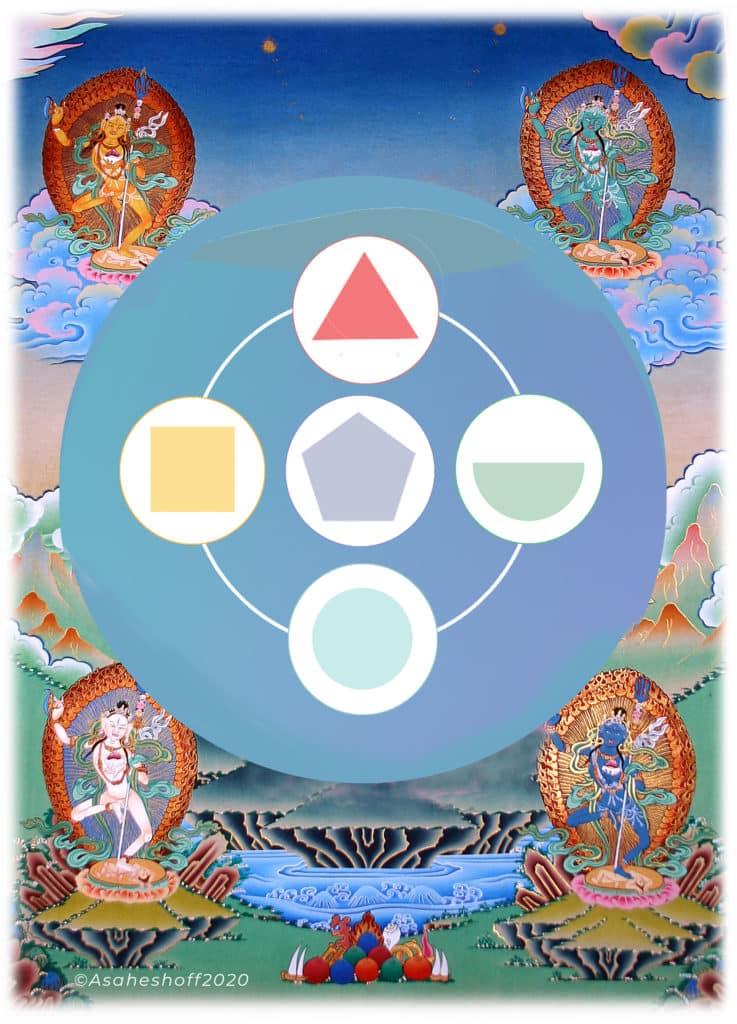The Mystery of the Five Elements

The Elemental Conundrum
The five Elements are the very bedrock of Vajrayana. Which makes it all the more extraordinary that, to date, there has been no attempt to define more precisely what these phenomena are, and how they exist as principles that structure our entire world. Those master yogins and yoginis that have achieved an inner realization of the Elements should have more to say about them and the part they play in our bodies and minds. Maybe all that is needed is to learn the method, follow the practice, and receive the fruition, as tradition dictates. While the illustrious history of highly realized beings within Vajrayana demonstrate this to be true, there are shortcomings to this approach, especially for the West.
The Need for Renewal
All significant innovation or discovery—including spiritual truths—eventually becomes increasingly codified and structured. Likewise, Vajrayana follows a set of highly structured dogma, creeds and ideologies. Those boundaries serve a useful purpose in keeping the integrity and meaning of a spiritual path intact. Group culture and modes of thought and action need to be preserved, but they can also become excessively dogmatic, canonized and rigid. Such systems might even transform into a lifeless husk, instead of a living, evolving organism. That is the tight-rope of human striving. One way to keep a tradition from becoming petrified is the healthy encounter with new thought, fresh insight, and the experiences of those who plumb the depths of that system, and then bring new pearls of wisdom to the surface. These are the wellspring of new growth and evolution, and s defense against losing the essence, while merely maintaining the outer facade of the tradition.
Western Mind 2.0
We do have a square peg and round hole situation with Western Buddhism. Those who have traveled to “exotic” locations and immersed themselves in Eastern life know how profoundly and essentially different the shape of the mind can be in different cultures and epochs. The interface of Buddhism with modern physics and psychology are two prominent attempts at bridging the gap between how we experience life today, and that of 10th century Tibet or 5th century India. Such dialogues look for similarities and common ground, or for confirmations, but do little to explain or expand on the crucial points of ancient knowledge. The West seeks understanding from the outer world, while Easter wisdom specializes in inner exploration. A possible bridge between the language of the inner and the outer is none other than the Five Elements.
Here we are not trying to solve the riddle of the existence of the Elemental template, but to look at different approaches to that mystery. This can only enhance our path of inner development. A deeper Elemental understanding also augments our ability to heal body and mind, to benefit others, and repair the natural landscape we inhabit. In so doing we fulfill what Buddhism calls the “two benefits” of self and other. Indeed Elemental work is fundamental to our spiritual unfoldment, but also can be a tool for treating illness, mental stress and anxiety and the underlying traumas that limit our vast potential.
